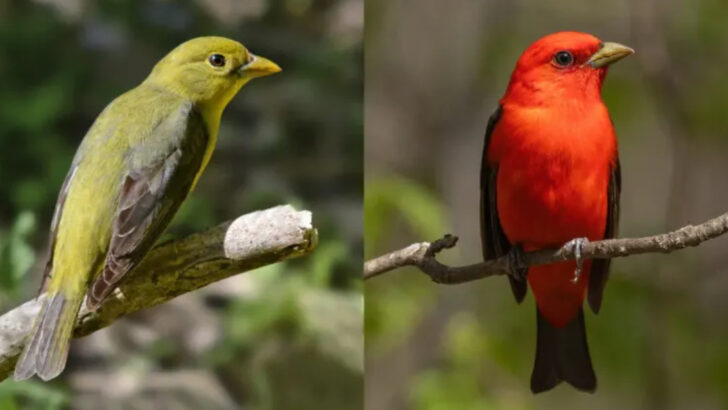Color is nature’s wildest magic trick—and some birds are its most dazzling performers. Imagine a creature that changes its outfit with the seasons, blending into snow or spring blossoms as if by enchantment. These 13 birds don’t just wear feathers—they flaunt living, shifting palettes that tell stories of survival and seduction. But wait, not all are shape-shifters. Four extraordinary birds keep their striking looks no matter the month, owning their vibrant hues all year like true royalty of the skies. From secretive camouflagers to bold, unchanging beauties, these feathered wonders remind us why the bird world is bursting with color and mystery. Ready to meet the avian chameleons and the everlasting showstoppers? Let’s dive into their stunning stories.
American Goldfinch

The American Goldfinch dazzles in bright yellow during the summer months, blending beautifully with blooming flowers. As winter approaches, this lively hue fades to a muted brown, allowing the bird to camouflage amidst the barren landscape. This seasonal transformation is not just for breeding purposes; it also plays a key role in survival. The change in color offers protection against predators, highlighting nature’s ingenious adaptations.
In the world of birdwatching, the Goldfinch’s striking summer appearance is a much-anticipated sight. Despite its color shifts, the bird’s lively spirit remains ever-present, enchanting observers year-round.
Willow Ptarmigan

The Willow Ptarmigan is a master of disguise in the Alaskan tundra. In winter, its feathers turn an immaculate white, blending seamlessly with snow-clad landscapes. Come summer, these feathers shift to earthy browns, matching the surrounding foliage.
This transformation is more than just aesthetic; it’s a strategic survival technique. By altering its plumage, the Ptarmigan evades predators, showcasing evolution’s meticulous craftsmanship. Bird enthusiasts often marvel at this seasonal metamorphosis, a testament to nature’s resilience.
Whether cloaked in white or brown, the Ptarmigan remains a symbol of adaptability.
Snow Bunting

Snow Buntings, the harbingers of Arctic charm, exhibit a stunning seasonal transformation. In winter, their plumage is primarily white, reflecting the icy landscapes they inhabit. As summer approaches, these feathers adopt a mix of brown and black, perfect for the rocky terrains.
This color shift is crucial for their survival, providing camouflage in vastly different environments. Despite the harsh conditions they endure, Snow Buntings remain vibrant and energetic, captivating birdwatchers across regions.
Their adaptability is a marvel to witness, revealing the resilience inherent in nature’s design.
Northern Cardinal
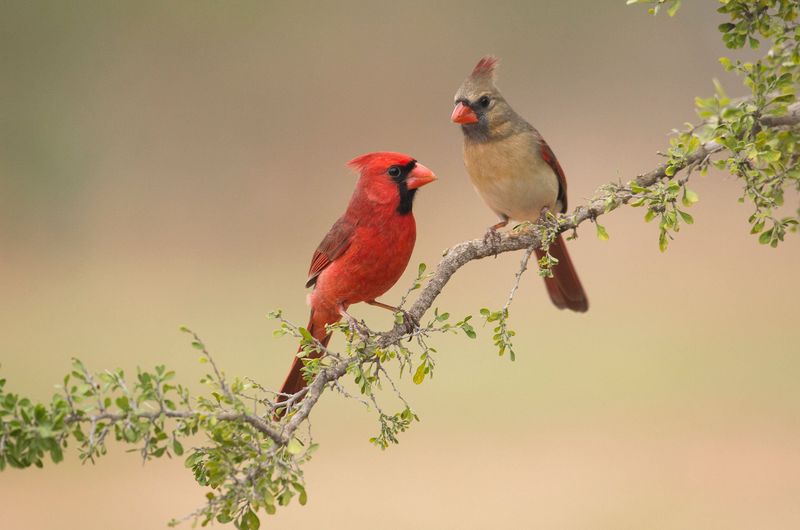
The Northern Cardinal, renowned for its fiery red plumage, gracefully adapts its coloration with the seasons. While males retain their striking red, variations in brightness are noticeable, influenced by diet and health.
This subtle change doesn’t hinder their mesmerizing appeal. Instead, it adds depth to their already vibrant presence. Cardinals are a beloved sight in gardens, symbolizing vitality and warmth.
Their song, as melodious as their appearance, enhances their charm, making them a perennial favorite among bird enthusiasts. Whether in full blaze or slightly muted, the Cardinal’s allure is undeniable.
Eastern Bluebird
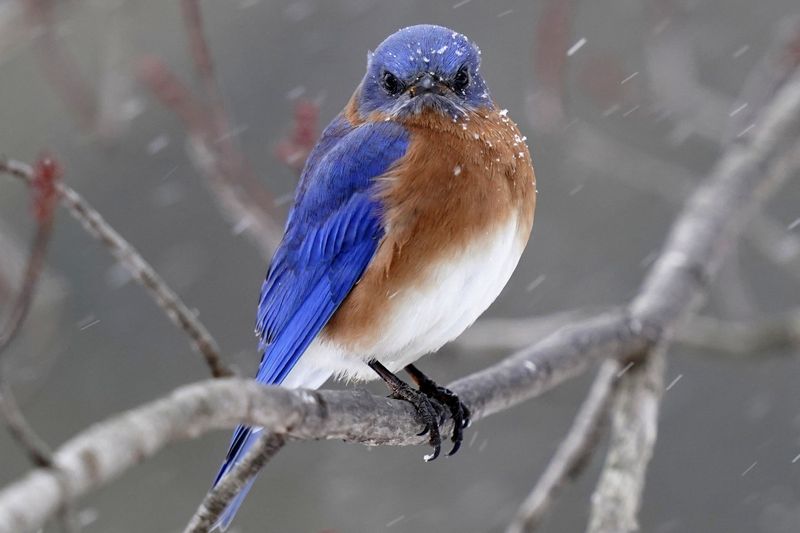
The Eastern Bluebird, with its vivid blue and warm rust plumage, experiences subtle shifts in color intensity throughout the year. These changes are influenced by dietary variations and seasonal lighting.
In spring and summer, their colors appear more saturated, as if nature itself highlights their beauty. During colder months, while still captivating, their hues may seem softer.
This gentle transformation enhances their charm, making them a favorite among backyard birdwatchers. The Eastern Bluebird’s presence, coupled with its cheerful song, brings a touch of joy to any landscape.
Painted Bunting

The Painted Bunting, often dubbed the “flying rainbow,” is a spectacle of vibrant colors. While generally maintaining its kaleidoscopic appearance, slight shifts in color intensity occur seasonally, influenced by environmental factors.
These subtle changes make their already dazzling presence even more intriguing. The male’s plumage, a mix of reds, blues, and greens, captivates bird enthusiasts and nature lovers alike.
Spotting a Painted Bunting is akin to witnessing a living masterpiece, a reminder of nature’s unparalleled artistry. Their unique charm and beauty make them a treasured sight.
Common Loon
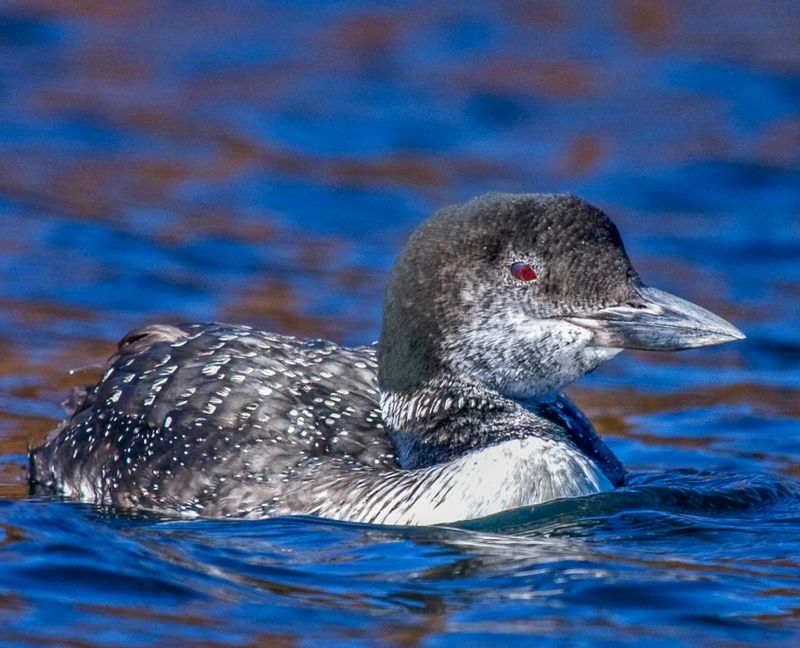
The Common Loon, an emblem of serene northern lakes, showcases a remarkable color transformation. In the breeding season, it dons a striking black and white pattern, exuding elegance on the water’s surface. As winter sets in, this plumage shifts to a more subdued gray-brown.
This transformation aligns with its migratory patterns, as the Loon moves to coastal waters during colder months. The haunting calls of the Loon, as evocative as its appearance, echo across landscapes, creating a mystical aura.
Whether in striking contrast or subtle tones, the Loon enchants and intrigues.
Black-capped Chickadee
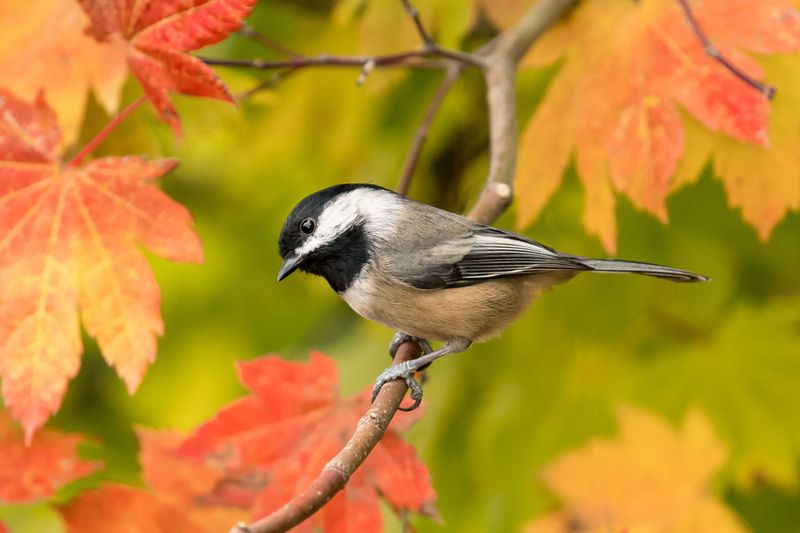
The Black-capped Chickadee, a small bundle of energy, exhibits slight shading differences through the seasons. Its distinctive black cap and bib remain constant, but subtle variations in the gray tones of its body can be observed.
These changes, though minor, add to the charm and appeal of this lively bird. Often seen flitting about gardens and forests, Chickadees are a delight to watch, especially in winter when their cheerful presence brightens bleak landscapes.
Their spirited antics and melodious calls make them a cherished sight year-round.
Red Knot

The Red Knot, renowned for its long migrations, undergoes a striking change in plumage. During breeding season, its feathers are a vibrant red, capturing the essence of its energetic journeys. As the season fades, so does its color, shifting to a more subdued gray.
This transformation aids in camouflage, an essential adaptation for survival during different stages of its life cycle. Observing a Red Knot in its full breeding glory is a special experience for birdwatchers.
Their endurance and beauty reflect the wonders of avian life and migration.
Junco
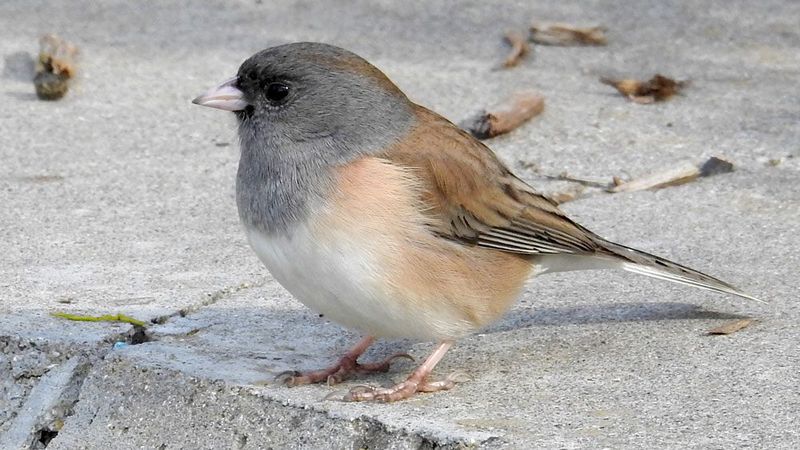
Juncos, with their gentle presence, exhibit noticeable color shifts across seasons. In winter, their plumage is a soft gray, blending with the snowy surroundings. As spring approaches, hints of rusty brown emerge, adding warmth to their appearance.
These shifts not only enhance their beauty but also serve as an adaptation to their environment. Juncos are a familiar sight in many backyards, often seen flitting around feeders.
Their adaptability and charm make them a favorite among bird enthusiasts, appreciated for both their subtle beauty and lively nature.
Scarlet Tanager
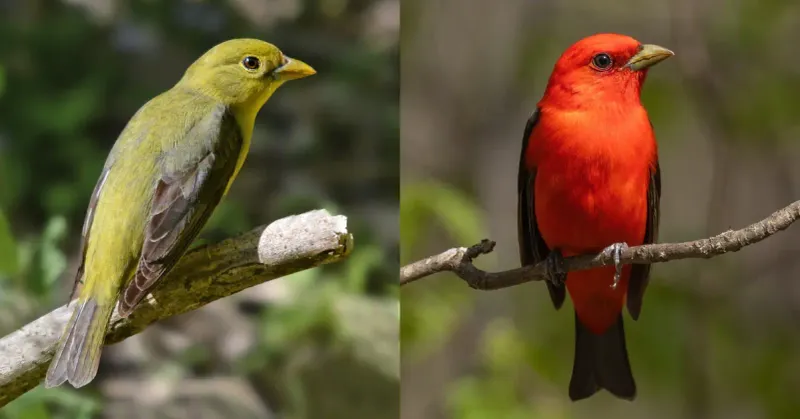
The Scarlet Tanager is a vivid spectacle during the breeding season, boasting bright red and black plumage that stands out against lush green forests. As winter approaches, this bold appearance transforms into an olive-yellow, a clever adaptation for survival.
This drastic change in coloration is part of their migratory journey, offering protection in different habitats. The Scarlet Tanager’s striking transformation is a favorite subject among birdwatchers, symbolizing the dynamic beauty of avian life.
Whether in fiery red or muted yellow, their allure remains captivating.
Ruby-throated Hummingbird
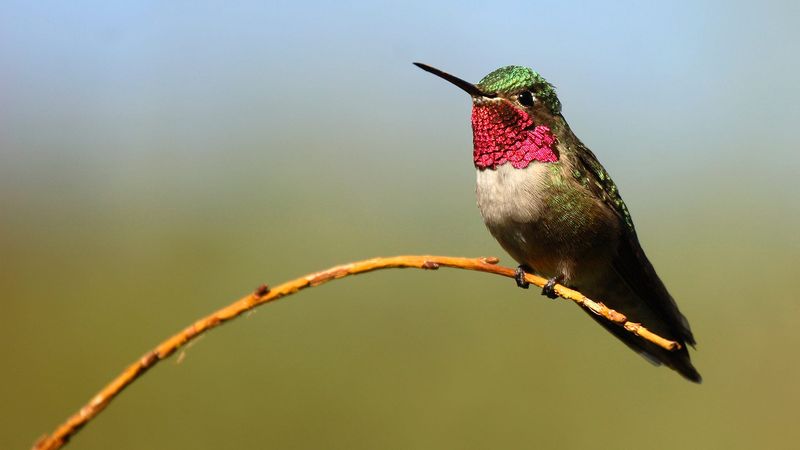
The Ruby-throated Hummingbird, a tiny marvel of nature, exhibits an iridescent throat that changes color with the angle of light and seasons. This shimmering display is not constant, adding an element of surprise to its appearance.
These changes are not just visually captivating; they play a role in attracting mates and deterring rivals. The hummingbird’s rapid movements and vibrant colors make it a favorite among garden visitors.
Their presence is a reminder of the vibrant energy and delicate beauty found in nature’s smallest creatures.
Harlequin Duck
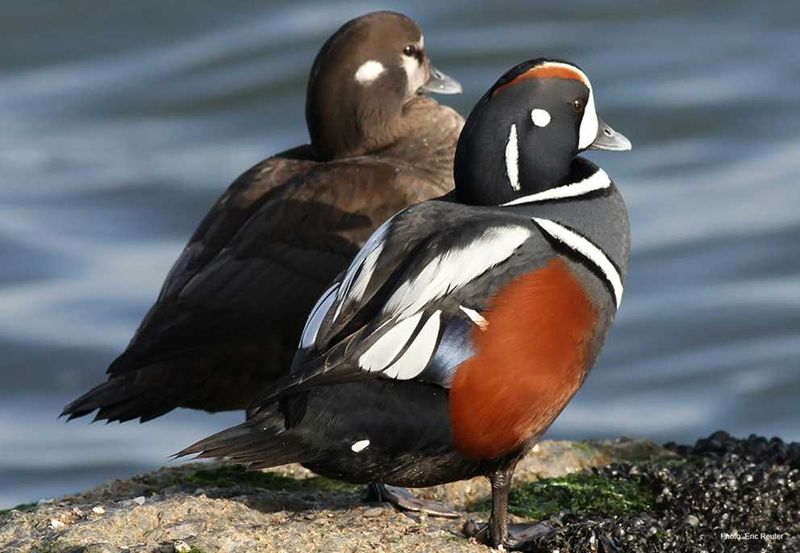
The Harlequin Duck, with its striking and colorful appearance, is a sight to behold in coastal waters. During the breeding season, its plumage is a vivid mix of blues, whites, and rusts. As the season ends, these colors mellow.
This transformation is more than just a seasonal makeover; it reflects the duck’s adaptability to changing environments. Bird enthusiasts cherish the chance to witness this vibrant display.
The Harlequin Duck’s beauty and resilience make it a symbol of nature’s diverse artistry, thriving in rugged coastal settings.
Resplendent Quetzal
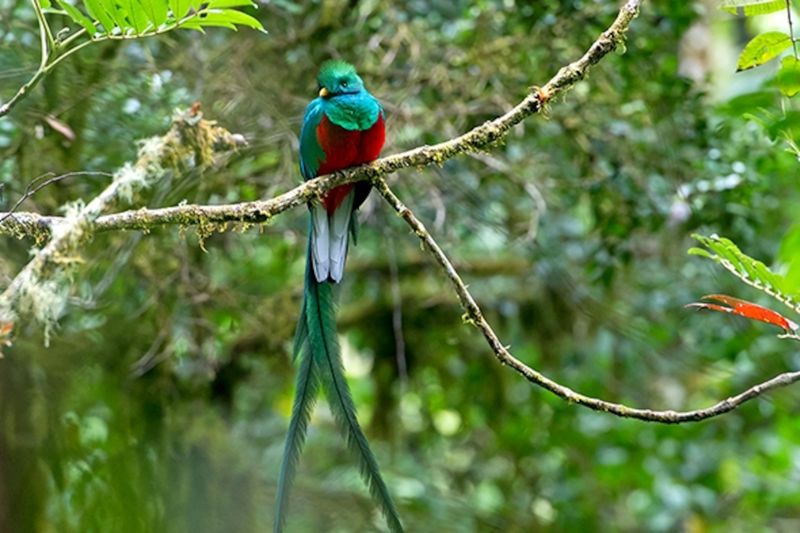
The Resplendent Quetzal, a treasure of Central American cloud forests, maintains its stunning green and red plumage year-round. This consistent coloration adds to its legendary status among birds, often associated with mythology and beauty.
Observers are enchanted by its iridescence and long tail feathers, which seem to shimmer with life. The Quetzal’s unchanged appearance throughout the year makes it a sought-after sighting for birdwatchers.
It’s a living jewel, embodying the vibrant spirit of the forests it inhabits, a testament to perpetual allure.
Hyacinth Macaw
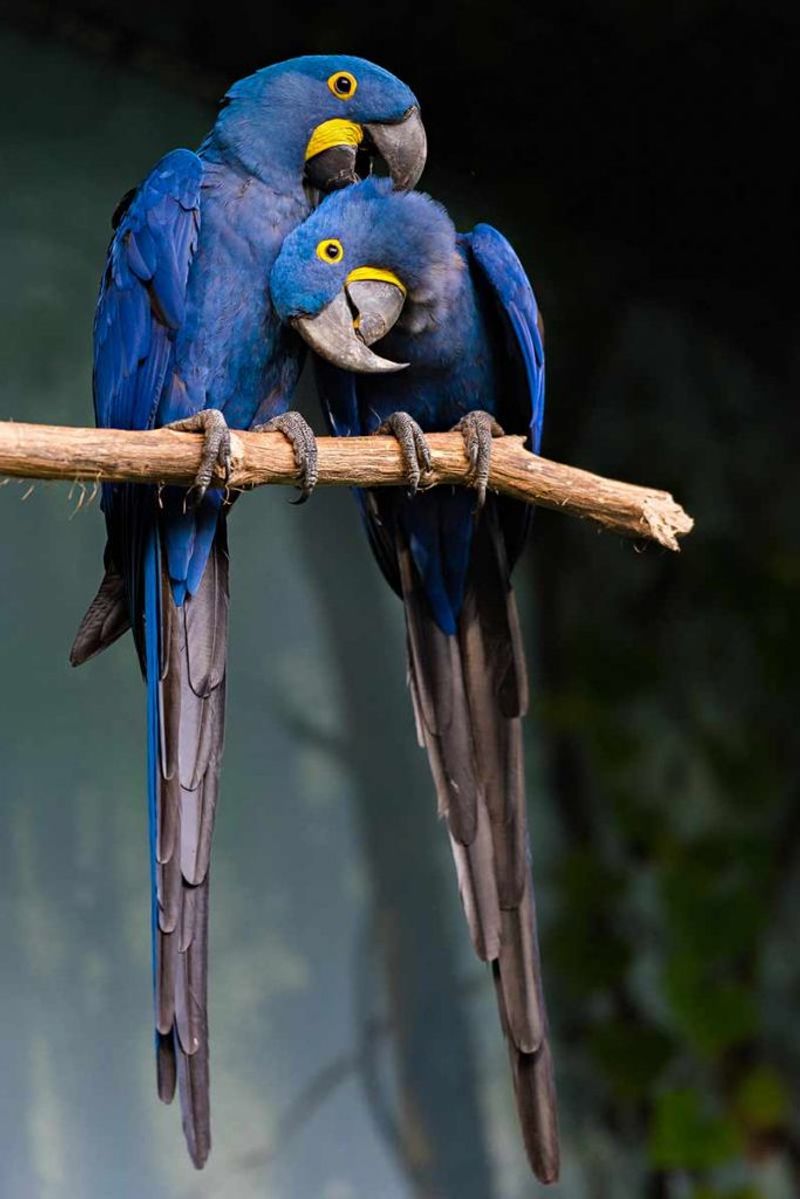
The Hyacinth Macaw, a majestic denizen of the Brazilian rainforest, is renowned for its vibrant blue feathers. Unlike some of its avian counterparts, this macaw’s coloration remains consistent throughout the year.
Its striking appearance is complemented by its playful and social nature, making it a beloved icon among bird enthusiasts and conservationists. The Hyacinth Macaw’s beauty is not just skin deep; its intelligence and social bonds are equally captivating.
Preserving its habitat ensures that this feathered wonder continues to grace our world with its presence.
Great Horned Owl
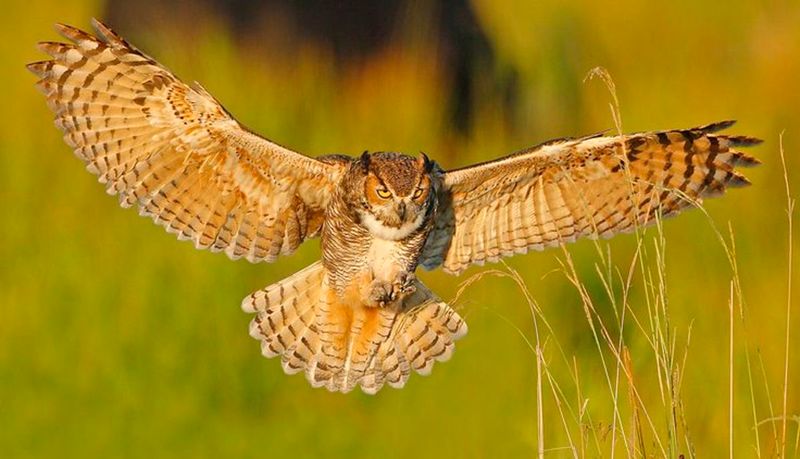
The Great Horned Owl, a master of stealth, maintains its mottled brown and gray feathers throughout the year. This consistent coloration offers perfect camouflage within its woodland habitats.
Known for its piercing eyes and distinctive ear tufts, this owl is a formidable presence in the night. Its hunting prowess and mysterious aura inspire both awe and admiration in those fortunate enough to observe it.
With its year-round consistent plumage, the Great Horned Owl remains a captivating figure in the world of birds.
Kingfisher
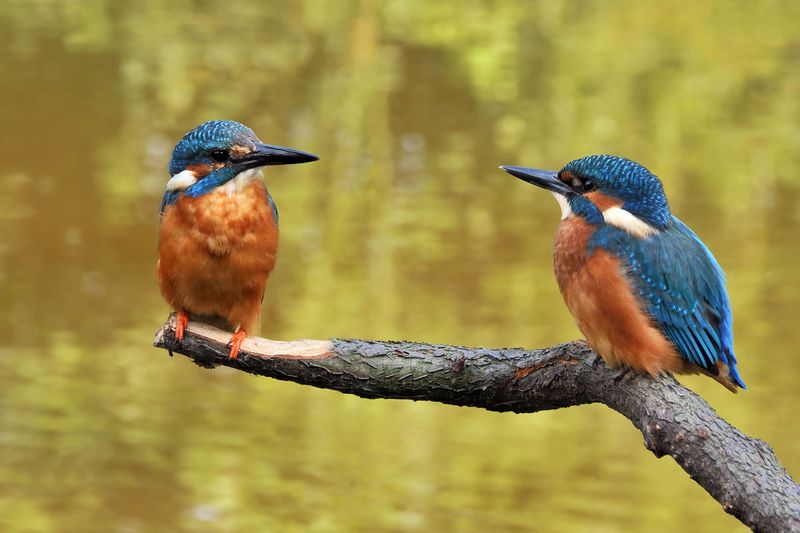
The Kingfisher, with its vibrant blues and oranges, is a dazzling sight along riverbanks. Its consistent coloration throughout the year ensures that it remains a standout presence in its natural habitat.
This bird’s striking appearance is matched by its swift hunting abilities, as it dives with precision to catch fish. Birdwatchers are often thrilled by its bold colors and dynamic movements.
The Kingfisher’s year-round vibrant plumage and energetic demeanor embody the lively spirit of the waterways it calls home.

